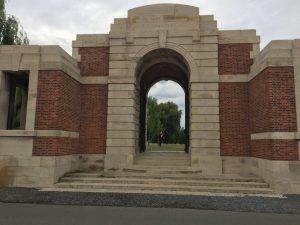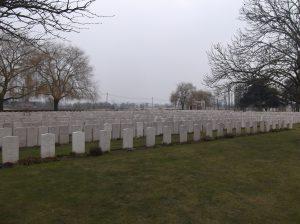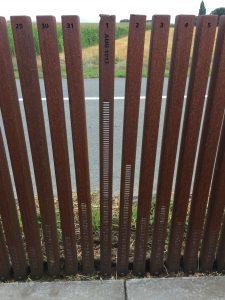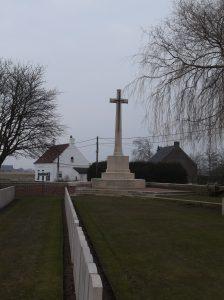Lijssenthoek Military Cemetery
CWGC – History Information
During the First World War, the village of Lijssenthoek was situated on the main communication line between the Allied military bases in the rear and the Ypres battlefields. Close to the Front, but out of the extreme range of most German field artillery, it became a natural place to establish casualty clearing stations.
The cemetery was first used by the French 15th Hopital D’Evacuation and in June 1915, it began to be used by casualty clearing stations of the Commonwealth forces.
From April to August 1918, the casualty clearing stations fell back before the German advance and field ambulances (including a French ambulance) took their places.
Lijssenthoek was one of the cemeteries visited by King George V in May 1922. The King, who lost members of his own family in the war, embarked on a tour of a number of cemeteries while they were being formally established by the Commission. The cemetery contains 9,901 Commonwealth burials of the First World War, 24 being unidentified. There are 883 war graves of other nationalities, mostly French and German, 11 of these are unidentified. There is 1 Non World War burial here. There is also a section with 35 graves for workers of the Chinese Labour Corps who died in the area of Ypres and Poperinge during and just after the First World War. The only concentration burials were 24 added to Plot XXXI in 1920 from isolated positions near Poperinghe and 17 added to Plot XXXII from St. Denijs Churchyard in 1981. Eight of the headstones are Special Memorials to men known to be buried in this cemetery, these are located together alongside Plot 32 near the Stone of Remembrance.
Source © Commonwealth War Graves Commission – Lijssenthoek-Military-Cemetery
Local men buried in this cemetery
Cecil George Clarke – Baston Memorial
George Gregory – Horbling Memorial
Leonard Brutnard – Thurlby Memorial
Samuel William Jackson – Haconby Memorial
Sidney Jackson – Bourne Memorial
Thomas Chambers – Bourne Memorial




Pictures © South Lincolnshire War Memorials – April 2017



